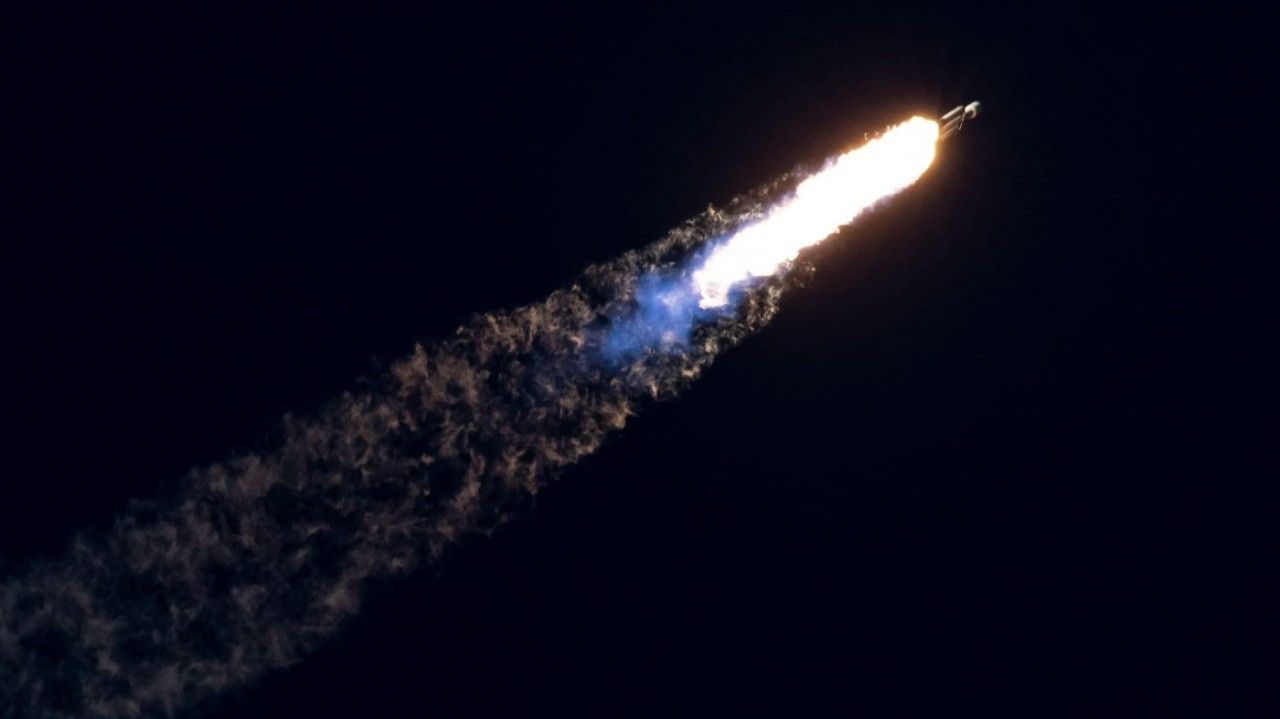Falcon Heavy launches after series of weather delays
A Falcon Heavy rocket lit up the skies over the space coast Sunday evening as it launched from Kennedy Space Center, carrying a communications satellite into space for ViaSat.
Heavy rain and winds have plagued the area all week, with teams having to stand down from two different attempts earlier in the week — one for weather and one for a last-minute abort that SpaceX has not explained. But the weather cleared this afternoon, paving the way for a spectacular nighttime launch.
Smoke and fire billowed from the rocket as it took to the skies, marking Falcon Heavy’s second flight this year following a multi-year hiatus. Tucked inside the rocket’s nose cone was a trio of satellites: a broadband communications satellite for ViaSat, a small communications craft for Astranis, and cubesat for Gravity Space.
Sunday’s Falcon Heavy mission was different from the previous missions before it as all three of the Falcon Heavy’s boosters were expended. That’s because the mission required more of the rocket’s fuel, leaving no leftovers for a propulsive landing back on land at the Cape or at sea on one of the company’s floating landing platforms.
Falcon Heavy first debuted in 2018, when it launched a bright red Tesla Roadster into orbit as part of a test mission. It consists of three Falcon 9 rocket boosters strapped together, with the center core carrying the cargo into space. Once its mission is complete, that core either gets expended or lands on one of SpaceX’s floating landing platforms in the Atlantic, while the two side boosters typically land in sync back at the Cape.
With its successful first flight, Falcon Heavy earned its title of most powerful rocket in SpaceX’s fleet, that is, until Starship came on the scene. Powered by 33 methane-fueled engines that generated 16.7 million pounds of thrust, Starship is three times as powerful as Falcon Heavy. Unfortunately, its first test flight didn’t go as well as Falcon Heavy’s.
On April 20, SpaceX’s first fully integrated Starship blasted off from South Texas, climbing to an altitude of 24 miles (39 kilometers) before its flight ended in an explosion as the team commanded the rocket to blow itself up above the Gulf of Mexico as a safety precaution. Teams are still investigating what went wrong in that test flight, which is considered a partial success due to the fact that it got off the ground.
Like SpaceX’s other rockets, Starship is designed to be reusable. Reusability is a key goal of SpaceX, which helps drive down costs and helps the company keep up a rapid launch schedule.
Sunday’s mission marks the 28th flight this year for SpaceX and the 100th flight that the company has flown reused payload fairings (also known as the rocket’s nose cone). It is also the 226th Falcon family launch and the 7th flight this month.
The mission was longer than usual, with all three payloads deploying over a 13-minute period approximately 4.5-hours after liftoff.
Source: The Hill


